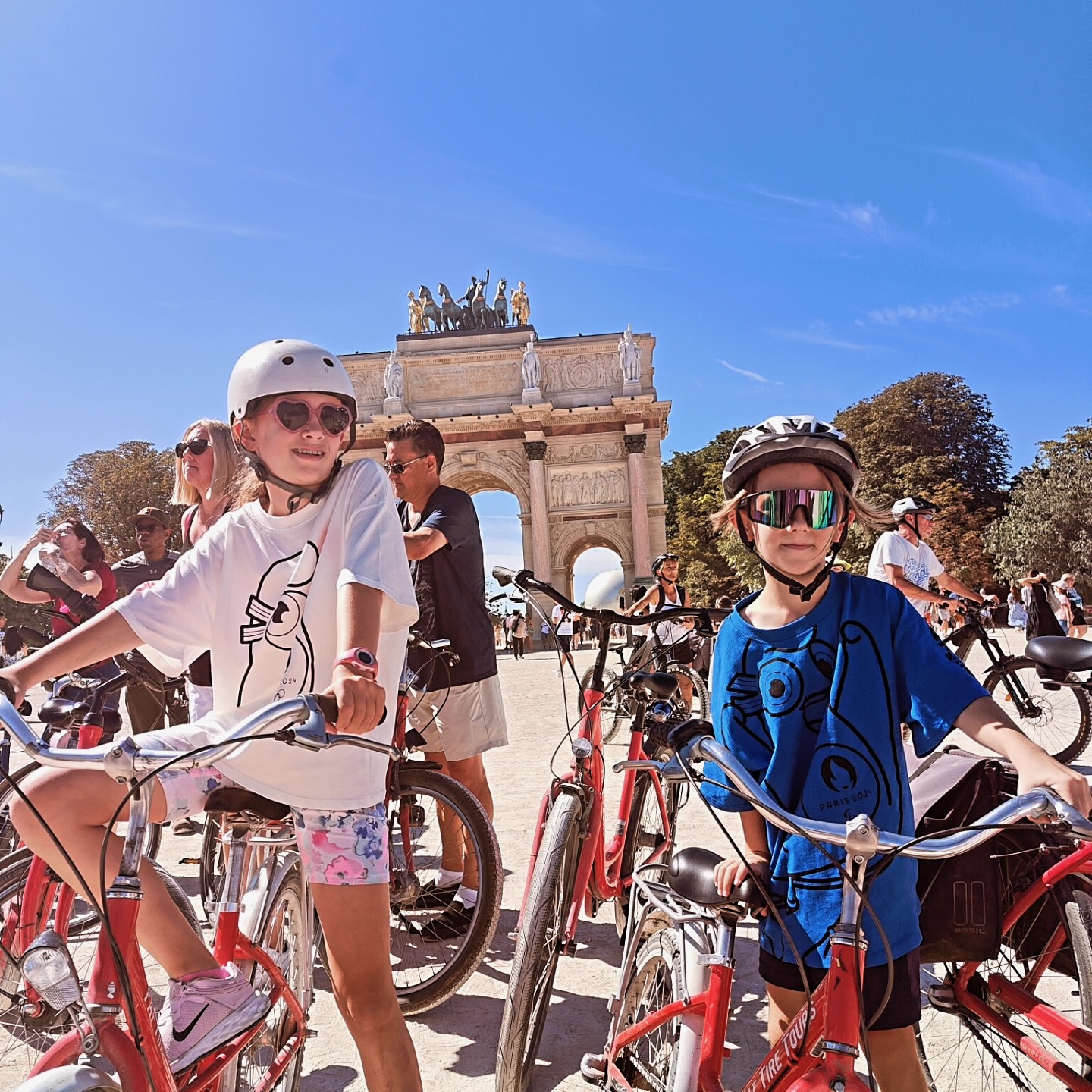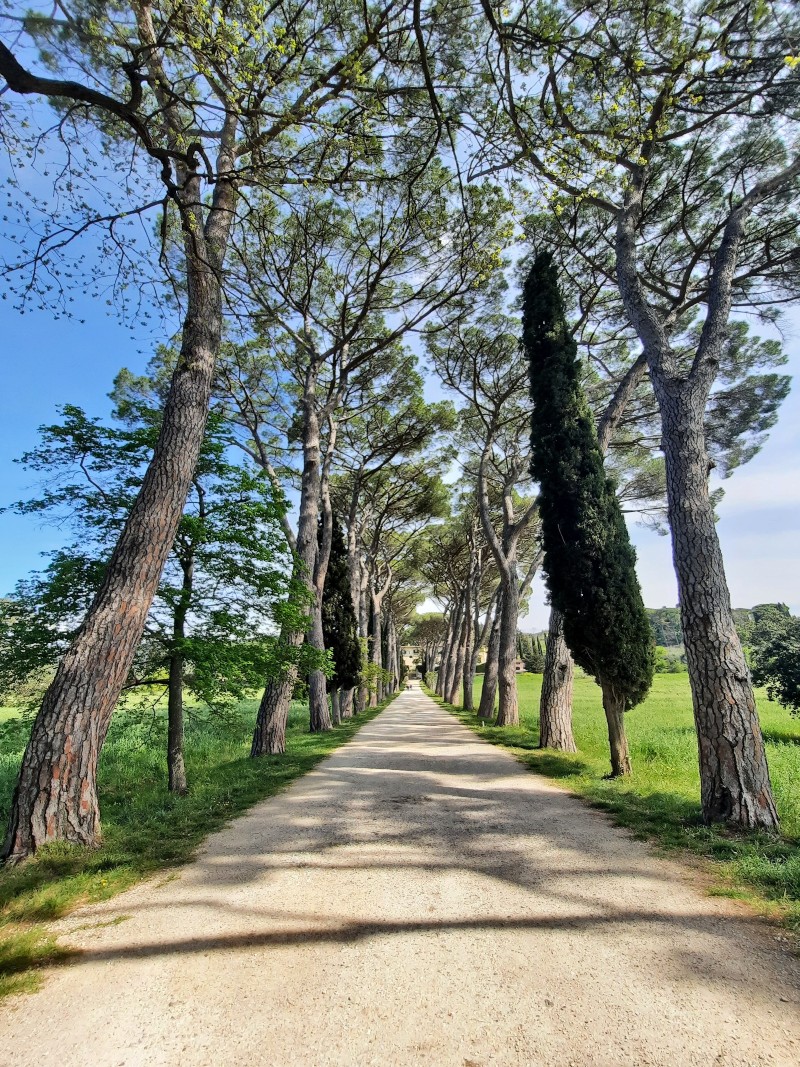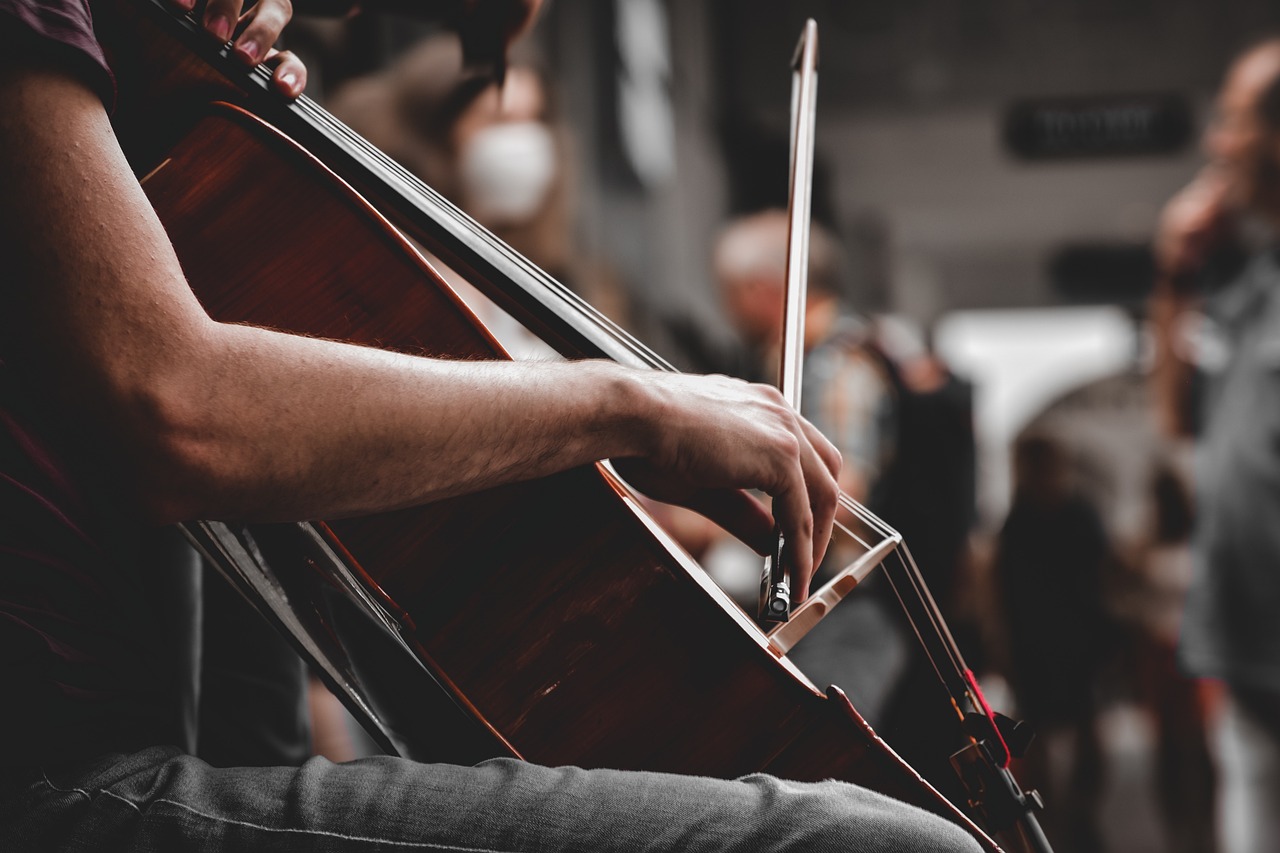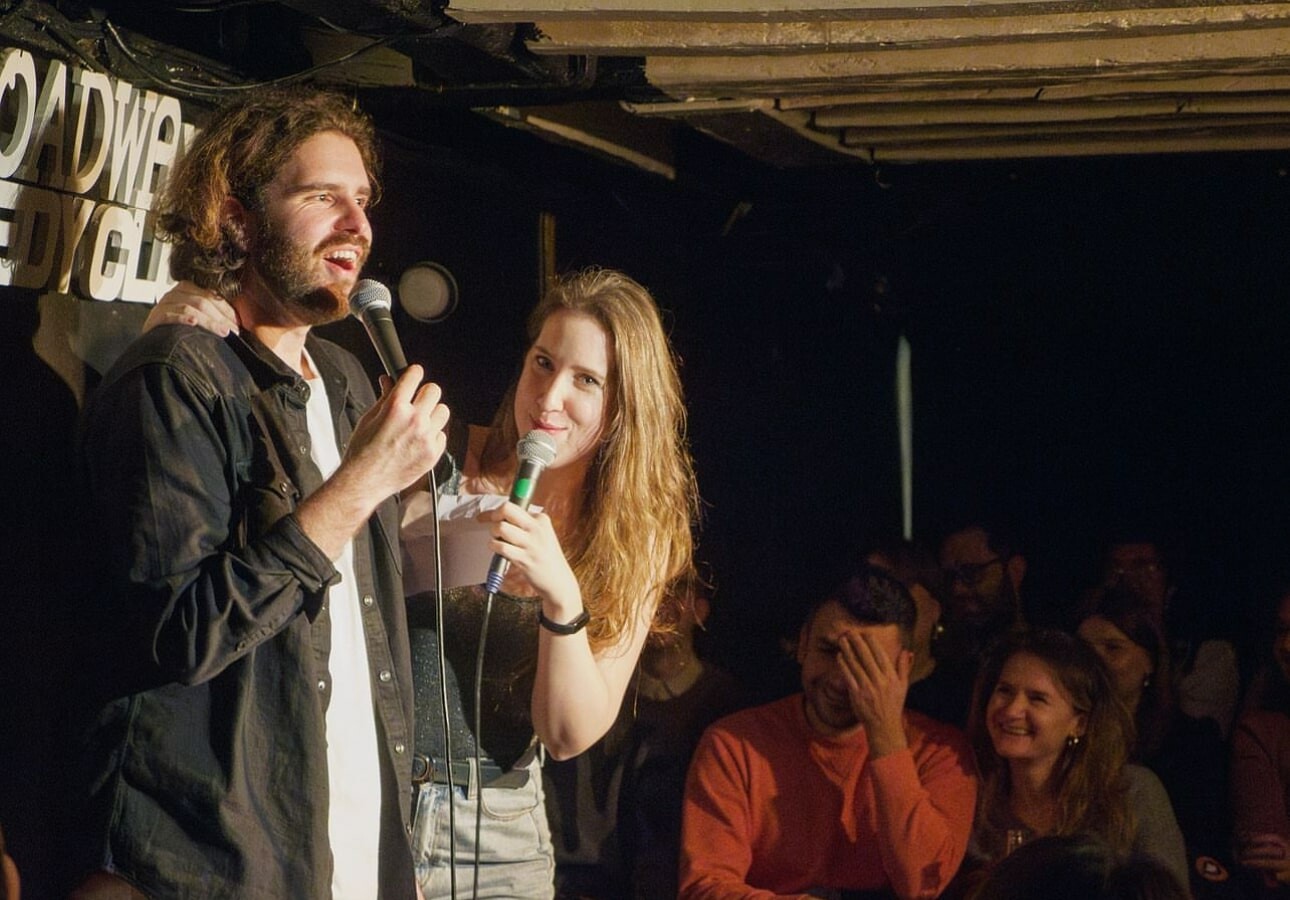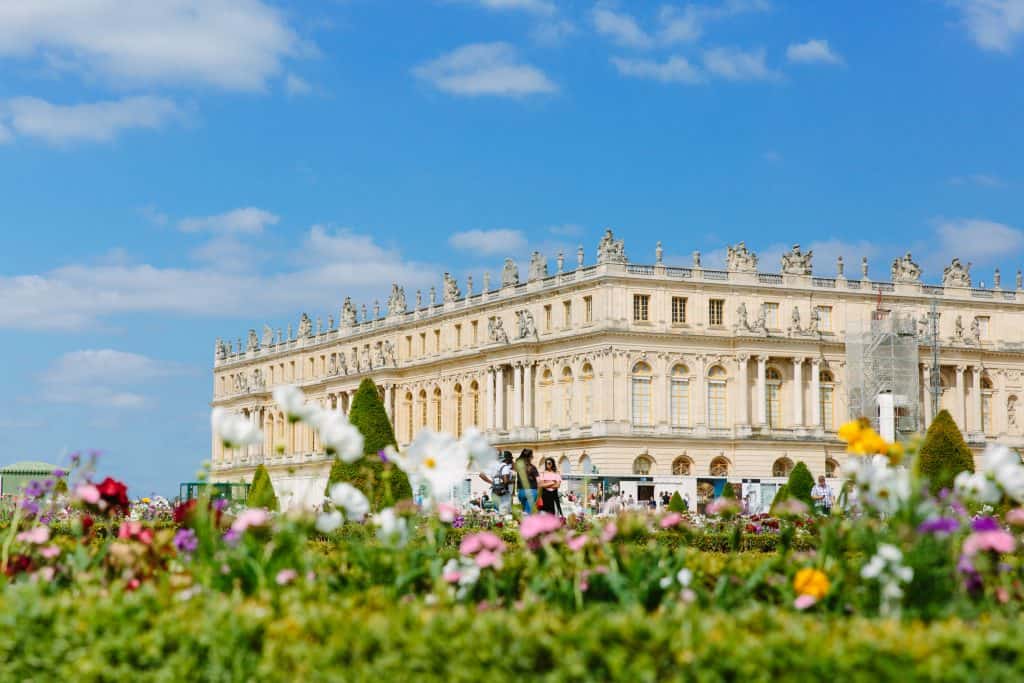
Everything you Need to Know About Versailles
Once the seat of the French monarchy, the courts, and the church of France, Versailles is still as important a place today as it was in the 1700’s. Versailles may be a household name, but not everyone knows why Versailles is special. We’re here to answer all of your Versailles questions; tell you the why, when, who, how, and what to do when you get there.

The Basics of Versailles
How do you say Versailles?
Verr-sigh. Accent on the verr.
Where did that word come from?
We’re not 100% certain, but there are a few explanations.
All possibilities share the Latin denominator; the word Versailles is similar to the Latin word versare which means “to turn over and over” as in tilling the soil. This Latin word may have been used during the medieval period when referring to plowed and cleared fields. The place where the palace of Versailles now stands was once a swamp that was transformed into a hunting lodge that was transformed into a palace, so there was a lot of ‘turning over and over’.
A second explanation comes in the Latin word versus which means ‘to slope’. Louis XIV, as he was building Versailles, created an artificial hill so that the palace would be the highest structure of the city (a city which was created solely because of the palace). There is a slope in front of the palace and behind it. Finally, the Latin versor means ‘to dwell’. Perhaps Louis liked the idea of a dwelling with a hill and made a new French-sounding word? The truth is, we may never know.
Where is Versailles?
Versailles is the name of the city (and the palace) which is located about 11 miles (17 kilometers) west of Paris. It takes around 30 minutes by train from the most western Parisian train station and anywhere from 20-45 minutes by car (rush-hour traffic is real). Versailles is located within the Yvelines department which is in the Île-de-France region. The zip code of Versailles is 78000.
What is a château?
Technically, a castle. But unless you’re trying to be a Disney princess, feel free to refer to it as a palace.
Getting to Versailles
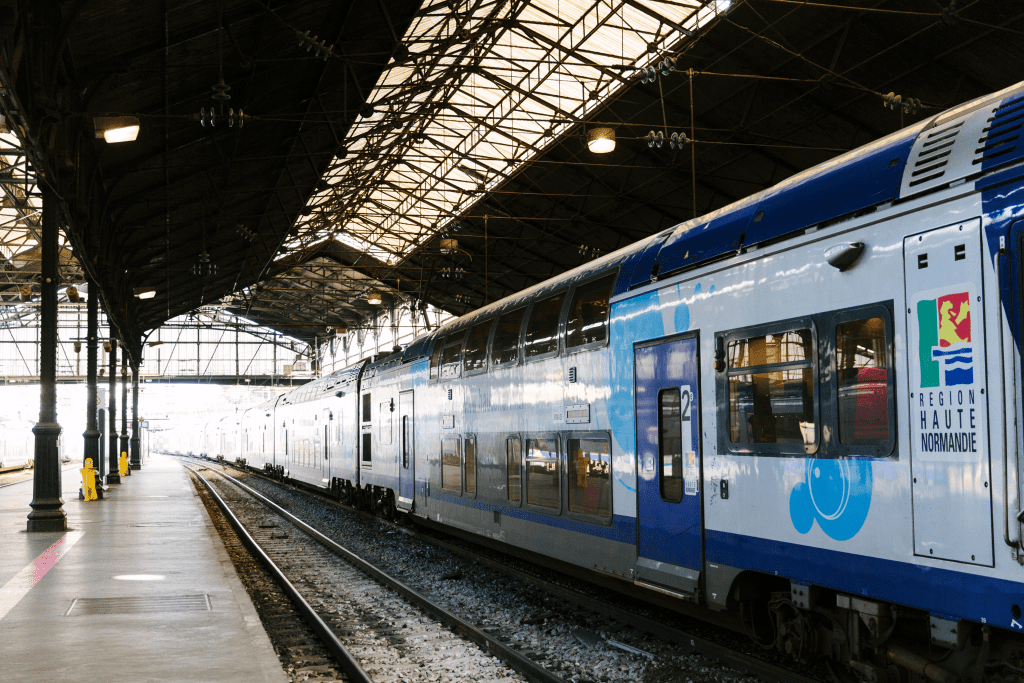
How do you get to Versailles?
Train. Sure, you can book a shared bus or take a cab, but the trains are easy, cheap, and fast.
Which ticket should I buy to get to Versailles?
There are three train stations in Versailles, but the good news is that none of them are more than 30 minutes on foot from the palace. Versailles Château-Rive Gauche is the best train station to access the palace as it’s the shortest walk and almost always staffed with agents pointing towards the palace. This is at the last stop of one branch of the RER C that you can access from several stations in Paris. As this line splits, be sure to look for the name of the end station (Versailles Château-Rive-Gauche) on the screens above the tracks before boarding.
The next best station is Versailles-Chantiers. You can also access this station from the RER C. Versailles-Chantiers will often not be the final station. The last stop of this line is usually Saint-Quentin en Yvelines, so remain vigilant and be sure to get off the train in Versailles.
Finally, you can take a train from the St. Lazare train station in Paris. Look for line L in the direction of Versailles Rive-Droit. Here again, Versailles may not be the last stop on the line.
Regardless of the station you choose, purchase your return ticket before leaving Paris. Ticket lines in Versailles can take up to an hour in high season.
From any guichet (ticket booth) or from a ticket salesperson, simply choose a round-trip ticket to Versailles once you’ve identified which station you prefer.
How much will the train ticket be?
As of May 2024, tickets are:
Paris-Versailles Château-Rive Gauche: €4.15/adult, €2.05/kids (4-9 years old), free for kids under 4 years old
Paris-Versailles-Chantiers: €4.15/adult, €2.05/kids (4-9 years old), free for kids under 4 years old
Paris-Versailles Rive-Droit: €5.00, €2.25/kids (4-9 years old), free for kids under 4 years old
*Please note that public transportation prices are expected to double during the Olympics!
How often do the trains depart?
Trains to Versailles Château-Rive Gauche depart every 15 minutes throughout the day, but may only depart every 30 minutes very early in the morning or very late in the evening. On Sundays, the trains can be very spread out, so be sure to check the timetables here before leaving your hotel.
Which train do I take to get back to Paris?
All trains from the main station (Versailles Château-Rive Gauche) go through Paris. I repeat, all trains go to Paris! Take a look at the information boards above the track to find the stop you need. You can connect to the metro from the RER C without paying any extra fees; just don’t come out of the train network.
How early/late do the trains run?
Departures can be as early as 5am depending on which station within Paris you’ll be leaving from. Trains from Versailles to Paris run as late as 12:30am, but sometimes the last train is earlier. Be sure to check out the timetable here as you’re planning your trip.
Visiting the Palace of Versailles
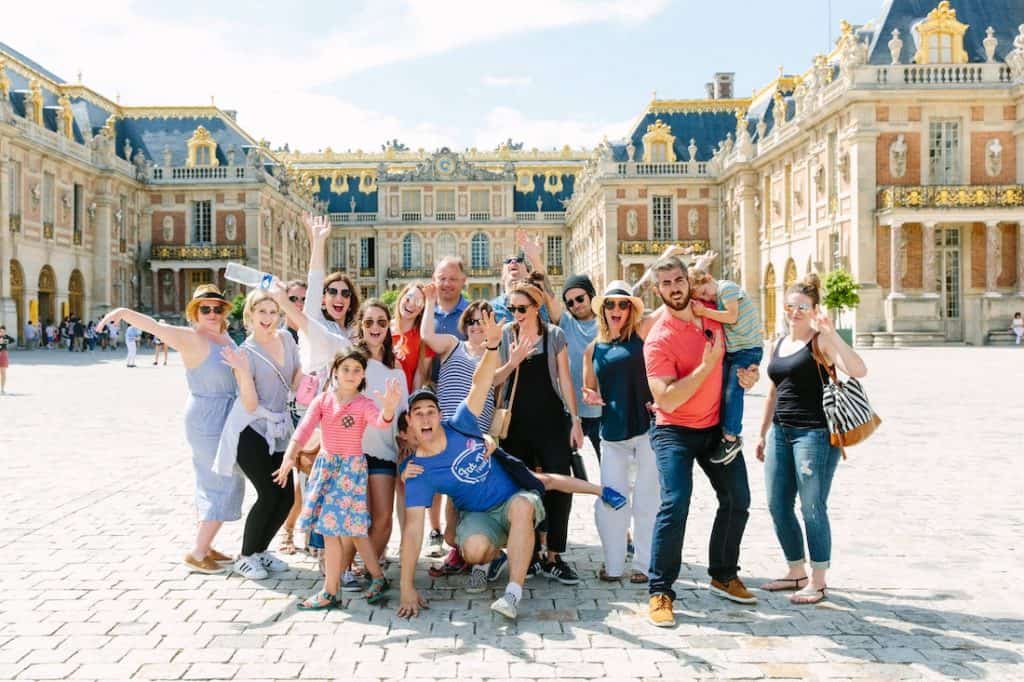
When is the best time to visit the palace of Versailles?
The palace is closed to the general public on Mondays, which makes Sundays and Tuesdays ultra busy. But, the fountains are only on four days/week: Tuesday, Friday, Saturday, and Sunday. Of these days, the ‘Grandes Eaux Musicaux’, or the Musical Fountains Show typically run every Saturday and Sunday in high season but Versailles has not yet announced their 2021 schedule. The ‘Jardins Musicales’, or Musical Gardens, typically run every Tuesday and Friday in high season.
You may be asking, what’s the difference? Not much, actually. Although the palace advertises the fountains as a ‘show’, the fountains turn on, there is music piped in from speakers, and you can watch as the fountains run. There is one fountain – the Mirror Pool – which displays timed variation to its geysers. That’s a great one to check out if you’re looking for something unique. Otherwise, the fountains turn on, they do that thing that fountains do, and you get to watch them.
The fountains have attracted significant crowds on the days that they run. This makes Wednesdays and Thursdays the best days to visit Versailles if you’re looking to avoid crowds. As far as the best times go, the palace is inundated with groups from their opening at 9am-3pm nearly every day they’re open. In the past, reduced tickets have been available in the afternoon as a way to encourage guests to visit later in the day. You should know, however, that the last entrance to the palace is at 6pm, and from that time onwards, palace staff start to walk through the rooms urging people to continue to the exit. We’ve determined that the best time of day to visit the palace is between 4-5:30pm. The audio guide inside the palace takes about 1.5 hours if you listen to every track. We think that you can still get a good feel for the palace in 45 minutes; it all depends on your energy level for crowded museums.
When is Versailles open?
Versailles is not open to the general public on Mondays. For all other details, it’s best to consult the palace’s website directly.
Which ticket should I buy?
Versailles has a lot of ticket options (hint: don’t worry about the logistics and join us on a tour! We’ll take care of everything). If you want to visit on your own, we recommend checking out the palace’s ‘Every Ticket in One Look’ document. You can then decide if you want to visit the palace, the palace + the gardens, or the palace + the gardens + the Trianon Estate.
What is there to see besides the palace?
Versailles stretches across 2,000 acres and includes formal gardens, a park, smaller satellite palaces, and a make-believe peasant village with a working farm. It also has golf-cart rentals, bike rentals, Segway rentals, row boat rentals, and several food and drink options.
The palace has the Hall of Mirrors and all the fancy things that spring to mind when you hear the word ‘Versailles’. The palace also boasts 2,300 rooms (although not all are available to the general public, thank goodness), 2,143 windows, 1,252 chimneys, and 67 staircases. The Hall of Mirrors alone has 357 mirrors.
The formal gardens house the maze-like shrubs and fountains. The fountains only operate on Tuesdays, Fridays, Saturdays, and Sundays during the high season, but the gardens are still accessible even if the fountains aren’t running.
The park is open 7 days a week! It’s free for pedestrians and cyclists, and cars are allowed in, but there is a small parking fee.
The Trianon Estate is a series of buildings and a small village. The Petit & Grand Trianon were pleasure palaces built by Louis XIV & XV which are open to the public in the afternoon and typically less busy than the palace. Marie-Antoinette’s hameau is a small village that she created to escape courtly life in the palace. This is where you will find the farm (hint: this is usually everyone’s favorite part of Versailles).
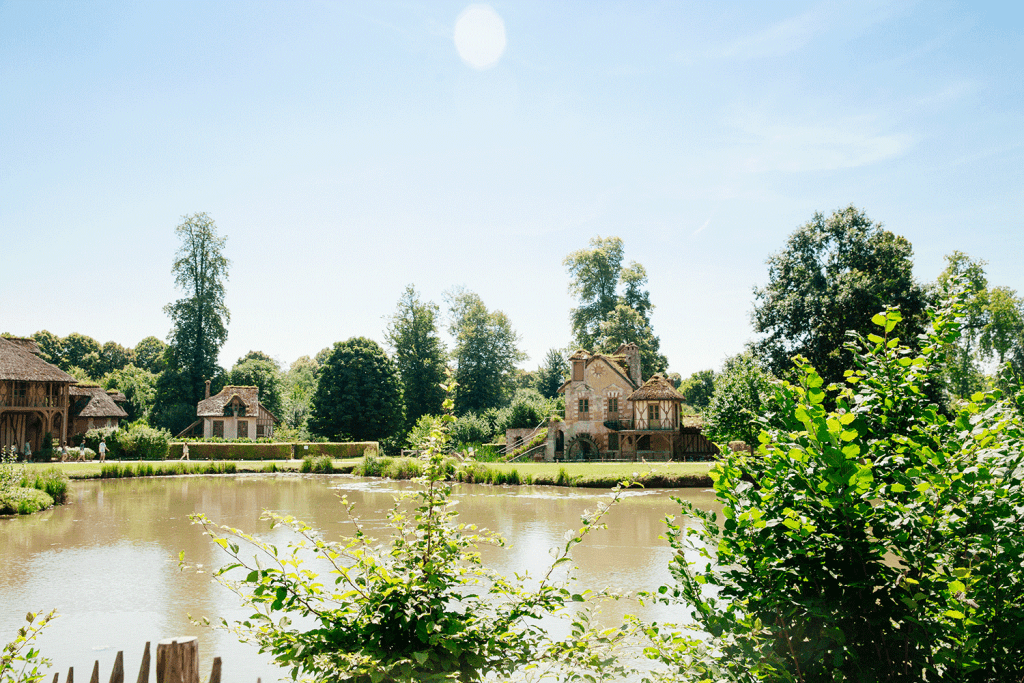
Can I visit Versailles for free?
Yes! The park of Versailles is 100% free for pedestrians and cyclists 7 days/week. The formal gardens are free on Wednesdays and Thursdays and throughout the low-season (when the fountains are not running). The palace and Trianons of Versailles, being part of the French national monument network, are free to anyone under 18 years of age. However, access to the formal gardens on fountain days is only free for kids under 5.
For residents of the European Union under 25 years of age, access to the palace is free with your ID card.
If you don’t meet these criteria, you’ll need to purchase a ticket to visit the palace. However, you are still welcome to visit the exterior of Versailles via the gardens (on non-fountain days) and the park at no charge.
The History of the Versailles Palace
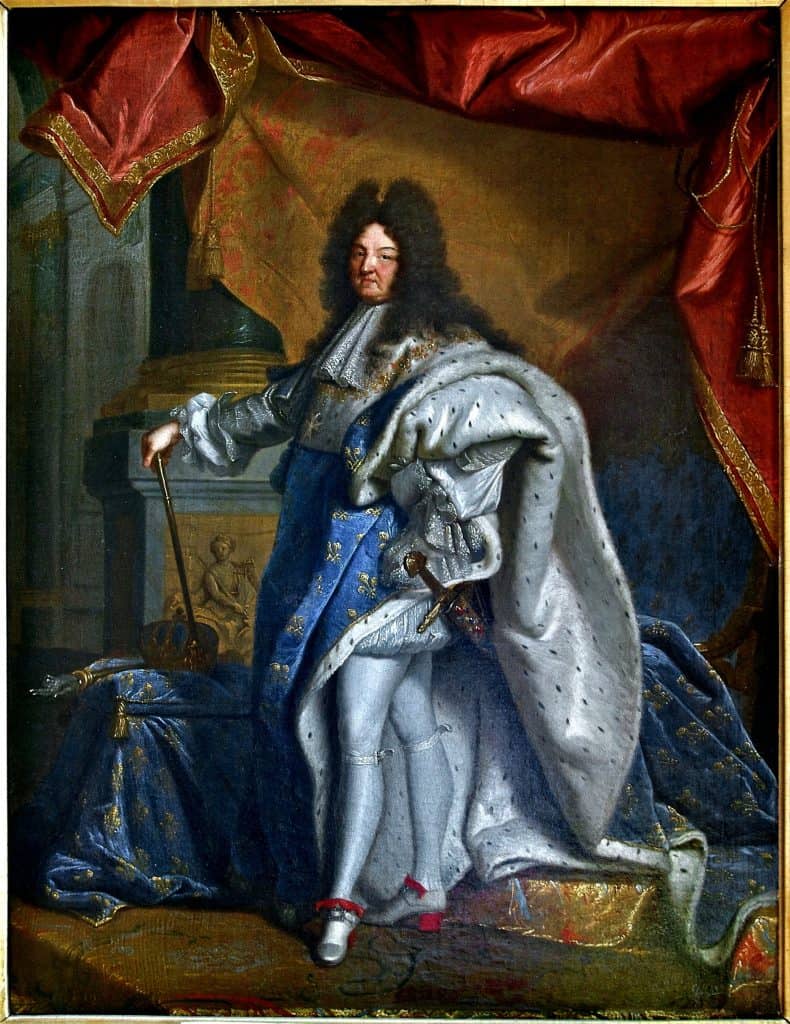
Who built the Chateau of Versailles?
Louis XIV commissioned it, but it was built by his favorite architect, Louis Le Vau. André le Nôtre was the head landscape designer, credited with the famous Versailles Gardens. The interior of Versailles was done by Charles le Brun, and later renovations to the palace would be carried out by Jules Hardouin-Mansart.
Louis XIV was just 5 years old in 1643 when he became king. He was living with his mother, Anne of Austria, in the Louvre in Paris. During a period in French history called the Fronde, there was an attack made on his life that caused him to re-think his home in the middle of Paris. He set his eyes on his father’s hunting lodge; a drab little hut located to the west of Paris. By 1661, Louis had begun work on his future château and by 1682, he had moved the full French court to the palace. This was a major change, which effectively moved the seat of French power from Paris to Versailles.
Why did Louis XIV build Versailles?
For one, he was worried that easy access to him and his court made him a sitting duck for future attacks. Louis XIV is also known for sweeping fiscal reforms, many of which were easily carried out away from his constituency who may have questioned them had they been aware of them. Louis was also obsessed with all things grand, and wanted a place to showcase his style, authority, and wealth.
Why is Louis XIV known as the Sun King?
Louis XIV loved ballet, and he often performed in shows as a child. He once played the part of Apollo, the god of the sun, and from that point onwards, sought to be the center of his own universe.
Louis XIV is also credited with ‘man over nature’ in his landscaping. He believed that it was man’s duty to shape a tree into man’s desired shape, and that plants should not grow and take on forms naturally. This would later become the iconic style of French gardens, like the Tuileries or the Luxembourg Gardens in Paris. Directing nature to bloom and blossom as it pleased him further solidified his desire to control everything around him. Just as the earth revolved around the sun, so too would France revolve around him.
Hint: Look for the radiant, golden suns (with Louis XIV’s face prominently displayed in the center) throughout Versailles when you visit.
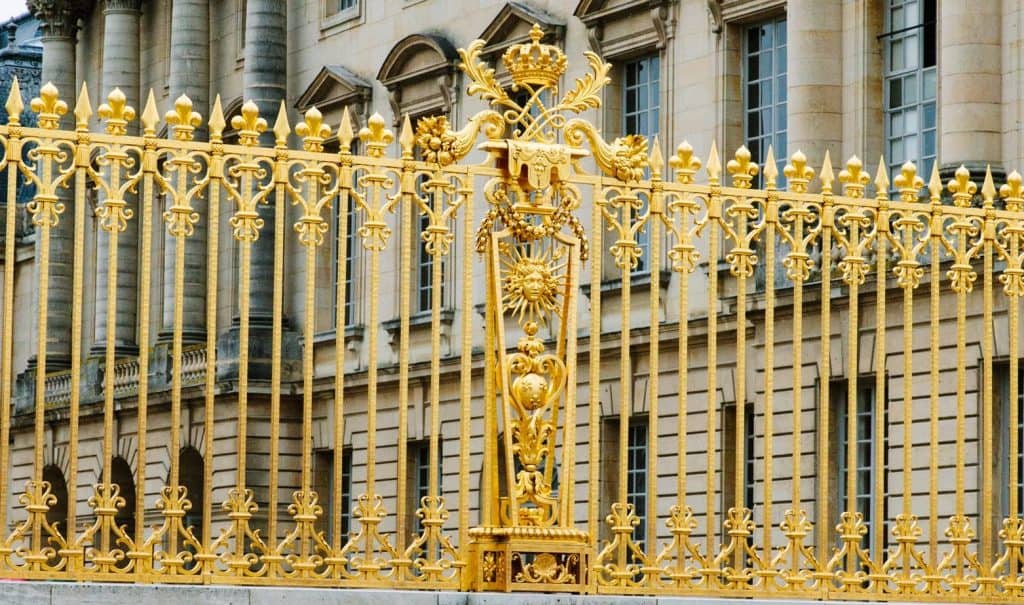
When was the chateau of Versailles built?
The chateau existed a hunting lodge from 1638-1661, when Louis XIV started works to transform the humble shack into a palace. The palace was deemed suitable enough for the King and the courts to move there in 1682, but works were ongoing throughout his reign. The Grand Trianon was completed in 1687. The Petit Trianon was started by Louis XV in 1762 as a separate lodging area for his head mistress at the time, Madame de Pompadour, but she passed away in in 1764, 4 years before completion. Louis XVI would later refurbish the building to provide it as a getaway for the Queen Marie Antoinette. She begun work on her hameau in 1777, rejecting the very idea of structured and orderly gardens that Louis XIV had made the rule of thumb in Versailles. Her English garden has been kept largely the same, and is the only area of Versailles that appears to be truly organic. The French revolution, which caused the Royal Family to move back to Paris in 1789, would mark the end of Versailles as the seat of the French government. Although Napoleon briefly resided there during his reign, the building became a museum open to the public in 1793.
Fun Fact: many of the Royal Family’s personal belongings went up for auction or were displayed in the Louvre (the other historical home of the French Monarchy), which also became a museum in 1793. The French people had overthrown their King and Queen and then agreed to pay a small fee to see their personal effects. All money generated by Louvre sales went towards the ongoing revolution, which later morphed into the Terror before Napoleon came into power.
What is Versailles famous for?
Many people associate the word Versailles with the Treaty of Versailles. The Paris Peace Conference (often referred to as the ‘Versailles Conference’) took place at the palace of Versailles from 1919-1920 and resulted in the League of Nations and the Treaty of Versailles, which ordered German reparations. The Treaty of Versailles was signed in the Hall of Mirrors on June 28, 1919.
The chateau of Versailles is also a UNESCO World Heritage Site, meaning that it is protected as an architectural and cultural achievement.
Versailles also gets credit for the evolution of the French society. Louis XIV mandated that distinct members of the court were permitted to don red-soled high heels, which were a sign of power. He would go on to elaborate and mandate the savoir-faire of court life with daily rituals like ceremonies for things as simple as waking up. And yet, Versailles was quite the smelly place having no real toilets until well into Marie Antoinette’s reign, nearly 100 years after the first residents. Ultimately, Versailles is famous for having been a show of strength and wealth by Louis XIV. His own superintendent of finance built a chateau that looked a little too similar to Versailles and wound up in jail for life. Don’t mess with the King!
Shower Thoughts About Versailles
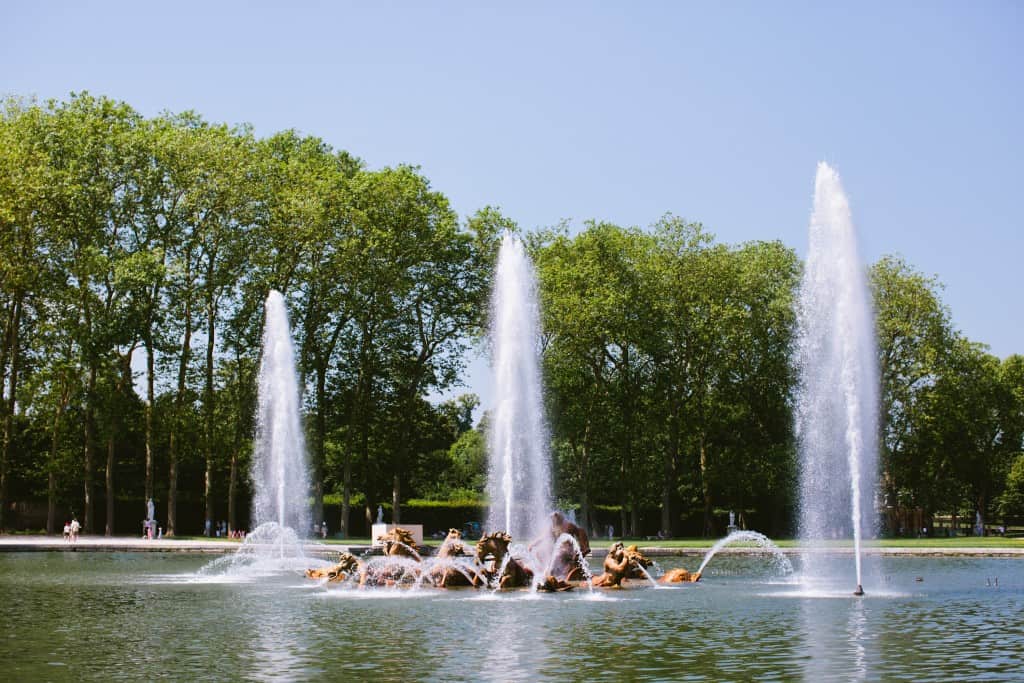
Can you rent out the palace of Versailles?
Contrary to what Kim Kardashian may have you think, no, you cannot rent the main rooms of the palace that are open for visitors during the day. You can, however, rent other areas of the domain of Versailles. The Versailles Grand Masked Ball is put on by a private company called Versailles Spectacles, and they organize an all-night party every spring in the interior of the Orangerie. Everyone is welcome, and it’s a night you won’t forget!
Is the show Versailles based on reality?
Much of what you see in the Netflix/Amazon Prime show Versailles is historically inspired. As with all made-for-tv dramas, some liberties are taken (like the black baby), and others cannot be verified but have circulated as rumors for hundreds of years.
Who was in power longer, Queen Elizabeth II or Louis XIV?
Louis XIV. He became king at the age of 5 in 1643 and reigned until his death in 1715, or 72 years. Queen Elizabeth II ascended to the throne in 1952 at the age of 27. Still in power, she has reigned for 69 years. Louis XIV is the longest ruling European monarch as of 2021, and will be until the Queen rules for another 3 years.
What’s bigger; Buckingham Palace or Versailles?
Buckingham Palace is bigger, boasting 77,000m². Versailles has just over 63,000m², however the domain of Versailles extends far beyond the palace walls.
What’s bigger; the Louvre or Versailles?
The Louvre knocks it out of the park with 210,000m². Makes you wonder why Louis wanted to move, doesn’t it?
How many people visit Versailles every year?
The most significant number in recent years is 10 million, however new restrictions may limit the overall number in years to come.
Conclusion
There is a lot to see and do and explore at Versailles, and it’s easily accessible from Paris. It is, however, fully brought to life with a knowledgable guide who can help you skip the lines, see the cool stuff, and make the history fun. We would love to have you join us on our Versailles Bike Tour, our VIP Versailles Bike Tour (which offers behind the scenes access into Louis XV’s apartments within the palace), our Sunset Versailles Bike Tour (with fireworks!), or our Versailles Walking Tour. And if you still have questions about Versailles, feel free to ask! Just reach out to us at support@fattiretours.com and we’ll be more than happy to answer your queries, even if you’re still on the fence about joining us.
Our goal is always for you to engage with the places you visit as you’re checking them off your bucket list. We want to make your time in Versailles fun and memorable.
